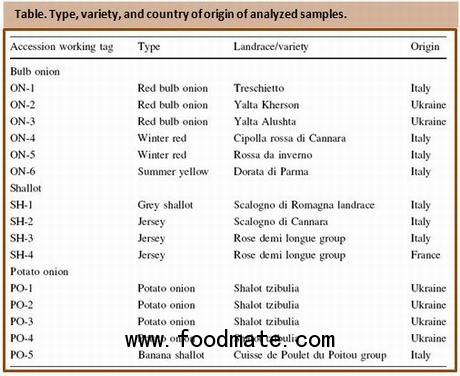Phenolics and alk(en)yl cysteine sulfoxides (ACSO) are the two main groups of onion putative health promoting compounds. Phenolics are present in two subgroups: anthocyanins (responsible for the red colour of some varieties) and flavonols (such as quercetin and, to lesser extent, isorhamnetin glucosides) responsible for the yellow and brown skin of other varieties. ACSO are organosulphur compounds which, under the action of enzyme allinase following tissue cutting and damaging, generate a group of intermediates, sulphenic acids, which are very unstable and undergo condensation to form thiosulphinates, the primary flavour and odour compounds in Allium species.
Italian scientists at University of Bologna conducted a research aimed at comparatively characterizing local onion varieties of different traditional food crops. The study focused on a preliminary qualitative and quantitative characterization by HPLC and spectrophotometric assays of phenolics and ACSO, and antioxidant activity in a number of locally sampled bulb onions, potato onions and shallots from Italy and Ukraine.

Fifteen phenolic compounds, belonging to flavonols and anthocyanins, and two cysteine sulfoxides, methiin and isoalliin, were quantified.
Total phenolics and cysteine sulfoxides were in the range 2595 – 9840 and 6777 – 18,916 mg kg-1 dry matter respectively. On average, potato onion phenolic content was 55 and 59% higher than in bulb onion and shallot accessions respectively. Bulb and potato onions showed a similar cysteine sulfoxide content, whereas in shallots sulfoxide level was about 17% lower. Flavonols were related to antioxidant capacity in both low and high anthocyanin types; however anthocyanins gave a prominent contribution to total antioxidant capacity in red onions.
Scientists concluded that in general, qualitative analytical differences were not detected among the three groups, however quantitative variation of some components allowed a rather clear discrimination.
High variability was detected within each group, showing the possibility of selection for both low or high content of specific components, impacting sensory and health promoting properties or simply characterizing local specific landraces. The establishment of relationships between composition and functional properties of specific components could represent a next characterizing phase of similar investigations.





